#history of witchcraft
Text
Tfw you listen to a big popular podcast talk about a subject you covered several years ago and cover some of the same points and agree on the same interpretation.
It's not jealousy or "omg i already did this," it's "oh wow i feel validated to hell and back right now." (Also, LORE is an awesome podcast and one of my biggest inspirations.)
Reference:
LORE, Ep. 251 - Casting Shade (April 08, 2024)
Hex Positive, Ep. 20 - Witchcraft and the Law (Sept 01, 2021)
16 notes
·
View notes
Text
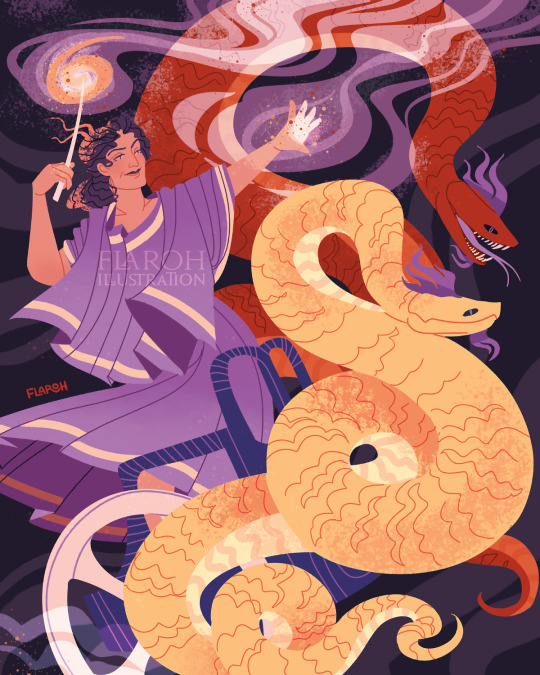
Classicstober Day 6: Medea 🐉🪄
#tagamemnon#flaroh illustration#classicstober#classicstober23#ancient history#medea#witch character#euripides#ancient magic#history of witchcraft#witchcore
569 notes
·
View notes
Text

Community does not need this!! But they’re loud in the comments about how harmful this could be for the community and divination and other spiritual practices and traditions! Thankfully!! I was just talking about spiritual psychosis on my close friends on Instagram yesterday and then I see things like this and post just went viral of some woman absolutely losing it, snot running out her nose and everything over the eclipse.
The fear mongering and demonization of spiritual teachings, astrology, tarot and spiritual practices and traditions is about to start becoming very big. It was already a really prominent thing oppressors have used for ages especially against poc who practice forms of witchcraft or deity worship they brought with them from home. I was just watching a docu-series yesterday that highlighted how the native population on mt. Shasta were forced to leave and practiced ritual and held ceremonies in the caves of mount Shasta and those who colonized would go into those caves after they left and preform mockeries of their ceremonies and rituals as entertainment.
We’re about to step into a reality and time where spiritual people, practitioners and others within the community will be replacing celebrities and individuals of high rank or people who hold a lot of power in this world and I said before that the oppressor has a very specific recipe for oppression and trying to keep people (especially in the west) as unaware and as stuck in perpetual karmic cycles and systems as much as possible. And this is just yet another technique they use to discredit individuals with gifts. They use psychics and astrologers and others themselves to help them predict and interpret what’s coming.
They use these types of stories or ideas to fuel radical religious beliefs and ideas that are built upon fear mongering and hatred, they use religious institutions and manipulated versions of their Bible and beliefs and create division within the west. Vast majority of republicans are statistically uneducated and are conservative who hold onto heavy religious beliefs and views to back up, support and justify their actions and beliefs. Heavily similar to antebellum America and the justification of slavery and the mistreatment of African American people.
youtube
To add onto that, this movie about tarot does not accurately portray what tarot really is and how it works whatsoever but guess who’ll believe it and perpetuate it. Half the negative ideas that are swirling around about metaphysical, Wiccan or spiritual practices are due to pop culture and horror movies and the individuals who sit at their desks in the dark scribbling away these plots and releasing these movies.
#tarot movie#tarot community#divination#demonization of intuitives#demonization of spiritual practices#Youtube#santeria#bruja#hoodoo#voodoo#poc#poc in the United States#history of witchcraft#spiritual community#psychic intuitive#astrologers#fear mongering#the western world#oppression#colonization#project 2025#making America fucking shitty again#Biden#trump#conservatives#social media#movies#censorship#new earth#tarot cards
43 notes
·
View notes
Text
Hex Positive, Ep. 036 - Margaret Effing Murray with Trae Dorn
Margaret Murray was a celebrated author, historian, folklorist, Egyptologist, archaeologist, anthropologist, first-wave feminist, and the first woman to be appointed to the position of lecturer in archaeology in the UK. So why so we get so annoyed whenever her name is mentioned in conversations about witchcraft? Well, it all has to do with a book Margaret wrote back in 1921…which just so happened to go on to have a profound influence on the roots of the .modern witchcraft movement.
Nerd & Tie senpai and host of BS-Free Witchcraft Trae Dorn joins me in the virtual studio to discuss the thoroughly-discredited witch-cult hypothesis, Murray’s various writings and accomplishments, and why modern paganism might not have caught on so strongly without her.
Hex Positive is now on YouTube!
Check my Wordpress for full show notes, as well as show notes for past episodes and information on upcoming events. You can find me as @BreeNicGarran on TikTok, Instagram, and WordPress, or as @breelandwalker on tumblr. For more information on how to support the show and get access to early releases and extra content, visit my Patreon.
Visit the Willow Wings Witch Shop to purchase my books and homemade accoutrements for your craft!
Proud member of the Nerd and Tie Podcast Network.
View the full article on WordPress
#Hex Positive#History#history of witchcraft#Margaret Murray#Pagan#Podcasts#show notes#Wicca#Witchcraft
112 notes
·
View notes
Text
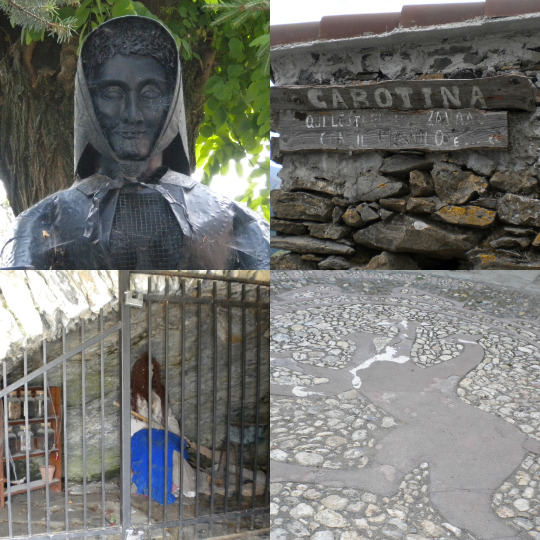
Italian witch trials
Triora is a small village located in the region of Liguria in Italy, the town is known as the “Italian Salem” because of the famous Witch’s trial occurred there in the 16th century.
It was 1587 when after two years of famine the village leaders and the elder’s council decided that such a tragedy was the result of the evil doing of a bunch of local women, all accused of mingling with the devil. The accused women were mainly prostitutes or poor women emarginated in the Cabotina, a district populated by meager people located outside the town walls.
Nobody complained when a bunch of wretched women without a penny were accused of witchcraft, but things quickly changed when the accusations spread like oil and invested the wealthier women of Triora’s society.
Genoa sent over to Triora Giulio Scribani, a former local magistrate, nominated special commissioner for the case. Scribani sent thirteen women to the prison of Genoa and raged throughout the area opening new cases and causing innocent women to die. Genoa, the Inquisition, and the Church itself tried to intervene and to stop the trials but Scribani went ahead; in Triora and neighboring villages such as Andagna, Bajardo, and Montalto Ligure the deaths of many innocent people were recorded.
In 1589 after two years of persecutions the trials were closed by the Inquisition, little is known about what happened to the women that were sent to Genoa, but dozens were the women imprisoned, and those who did not burn to death, died from the torture they endured.
Historians agree in saying that the reasons behind the accusations, were possibly that local landowners wanted to rise food prices to increase their income causing people to become unable to buy food to sustain themselves and their families. Blaming the death of hunger-stricken people on witchcraft was a perfect way out.
Today the town honor the memory of the events with a museum dedicated to the witch hunt, trials and witchcraft, but the geographic area is still connected with its mysterious and magical past.
The heraldry symbol of the town is Cerberus, the infernal hound, the name Triora in fact comes from the Latin Tria Ora which means three mouths. Triora’s main church, the Collegiata it’s believed to be constructed on a previous pagan temple, a Fanum. Evidence of earlier pagan cults is also represented by an ancient menhir situated in the Mezzaluna Pass. But the area is full of places considered witching spots, natural spaces where it’s believed that withes organized their sabbaths, like the lake Lagodégnu, the field Ciàn der Préve, the fountain Campomavùe and the nearby walnut tree. These places, with the ancient Cabotina, can still be visited today and recall to the primeval traditions of Italian witchcraft. The village also organizes an annual festival dedicated to witchcraft and paganism.
#witchcraft#witchblr#italianwitch#strega#italian witchcraft#witches of tumblr#witch trials#Triora#History of witchcraft#italy#witch hunt#italian folklore#stregheria#traditional witchcraft#liguria#my pics
98 notes
·
View notes
Text
⛤Fairies, Elves and Vile in Slav History and Myth⛤
Many of us know a lot about Greek, Roman and Viking mythology but few of us have ever heard about Slavic folklore.
This is partly due to the attitude of the Church, which throughout history was mostly negative towards mythological beings, holidays and customs from Slavic mythology.
The myth of fairies (“vile”) is common to many Slavic peoples, and is one of the most widespread and oldest myths.
We get the first information about fairies in our area from Procopius of Caesarea (6th century), who says that the Slavs "respect rivers and nymphs, as well as other demons, and offer sacrifices to all of them, and on that occasion also do fortune-telling."
In Slavic mythology there are only fairies as supernatural beings, mysterious women who live in nature, mostly on mountains, by lakes and streams or in them, next to springs or in the ground, in special caves and pits.
Fairies resemble human women, boast a special beauty and have no wings.
They are tall and slender, with lush hair that is either loose or braided.
They wear white clothes, and sometimes they have a golden crown, a golden star or an evergreen wreath on their head.
In some stories, fairies have several physical flaws.
In one version, their hair stinks terribly, and in another version, instead of human feet, they have cat's paws, horse hooves or mule and donkey hooves, and goat or cow legs, which they then hide well.
Maybe that's why fairies love horses so much.
If someone's horse stays outside the barn overnight, they play with it until dawn and braid its mane.
Fairies are mostly good or neutral, but you have to be careful around them because they are easy to anger.
They help people by giving them useful things, they look after the flock while shepherds sleep, heal people with herbs or teach them which herbs have healing properties.
They show the way to a lost traveler, strengthen the soldiers and put to sleep a crying child in the cradle.
Sometimes the fairies make it a condition that the person to whom they gave the gift must not look at the gift until he gets home.
If the person bows down and looks, the gift turns into coal, eggshell, and the like.
The four-leaf clover is known in Slavic countries as fairy grass, and the person who finds it will bring luck and wealth, but also great misfortune if he throws the clover into the fire.
Admittedly, sometimes they know how to steal a child they particularly like (most often a beautiful and gifted child) and raise it as their own.
Sometimes they steal a child and plant their child instead (like changelings).
Although there are no elves, fairies like to seduce human youths and have offspring with them.
Men who are somehow related to the fairies are called elves, elves, or elves, but they are definitely of human origin.
If someone finds the fairies combing at the well, they take him with them.
They like to take revenge on humans if they break their oath or if they do not accept fairy friendship.
Those who accept fairy friendship often become clairvoyant or become skilled clairvoyants.
In addition to children, fairies also know how to kidnap adults.
A myth was recorded in Novigrad that says that fairies know how to kidnap a man and give him the knowledge of divination. They do this by taking him to the mountain where they live. The initiation of man takes place next to an old tree, which is a frequent initiation symbol in many mythologies.
It was also believed that fairies feed on honey, lambs, little pigs or eat lard.
Word comes that they ate the crumbs that were left on the table after people had eaten their meal.
Fairies do not drink water from anywhere but pure springs.
Sometimes their power was thought to reside in the golden belt or scarf they wore and if it was taken away, they lost their power.
That power was great, and this is best described by the legend that says that the Arena in Pula was built by fairies in one night.
They took stones from Učka and stacked them in a circle.
But fairies, in this version, are creatures of the night and when they heard the song of the first hen in the morning, they had to stop working.
Because of this, the Arena remained unfinished.
Suđenice (destinies, sujenices, birth women) are also some kind of fairy creatures that determine a person's fate at the moment of birth.
There are usually three judges who decide the child's fate after birth, and it will be as the last judge says.
They are invisible to people unless a person has a fern flower with them, and a woman in labor can hear them if she stays up all night.
In some regions, there was a custom of leaving food on the table, which the judges would then eat and then be gentle and benevolent in divination of the child's fate.
Women who claimed to be particularly skilled in healing and that fairies had taught them to do so were called elves.
There is a case dating back to 1660 when a notice was received "to the captain of Janjina in the Republic of Dubrovnik, Ivan Gučetić, that there were elves and witches in his captaincy". The captain ordered one of those elves to be brought because he was interested in what elves could do.
The elf replied that she knew how to heal and that she had been taught it by Aunt Vila, who appeared to her in a white robe, in the form of a nun.
She also claimed to be able to tell who was harmed by a witch and whether that person would recover or not.
From this statement, the mixing of the older mythology about fairies with newer Christian elements is obvious.
The reform of the Church, the fierce Protestant criticism of the situation in the Christian world of that time and the Council of Trent (1545-1563) initiated processes that strongly influenced Europe.
Namely, in addition to the reform of the Church, there was also a "reform of folk culture" when elves were put in a negative context, even though they had not previously attracted too much attention in church circles.
In the 17th century, elves were equated with witches, which meant that they were equally subject to persecution.
The practice of persecuting women accused of possessing supernatural powers was put to an end by Maria Theresa in 1756, and two years later, courts in Slavic countries were prohibited from conducting any trials against witches, elves and sorcery without the empress's direct permission.
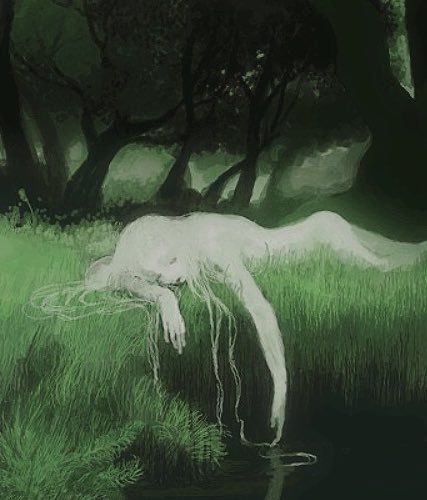
⛤Isidora⛤
#slavic magic#slavic mythology#vile#vilenjaci#slavic folklore#slavs#fae#faeries#faery#fairy#fairy cottage#witch#witchcraft#history of witchcraft#magic#magick#witchblr
212 notes
·
View notes
Text
I need trustworthy resources to study the history of witchcraft please
7 notes
·
View notes
Text
While digging through some of my family's old books I found a book i bought in 2004 with my birthday money at 9 years old. Fun fact this book was published in my burthday year 1995. I just thought I'd share

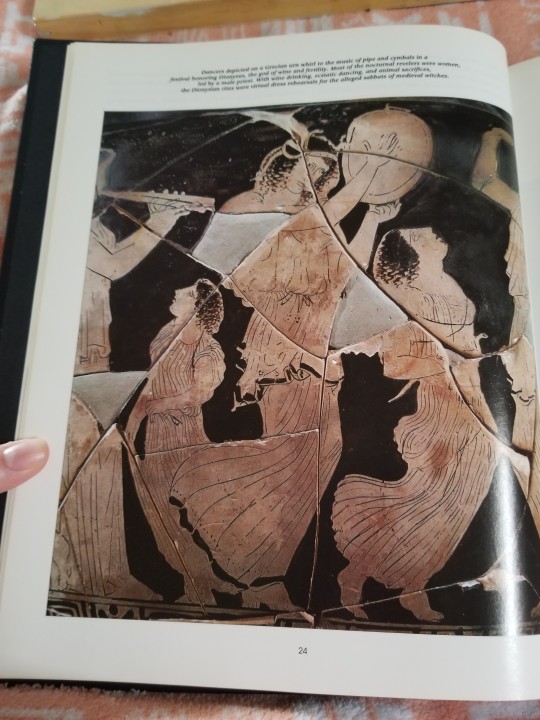

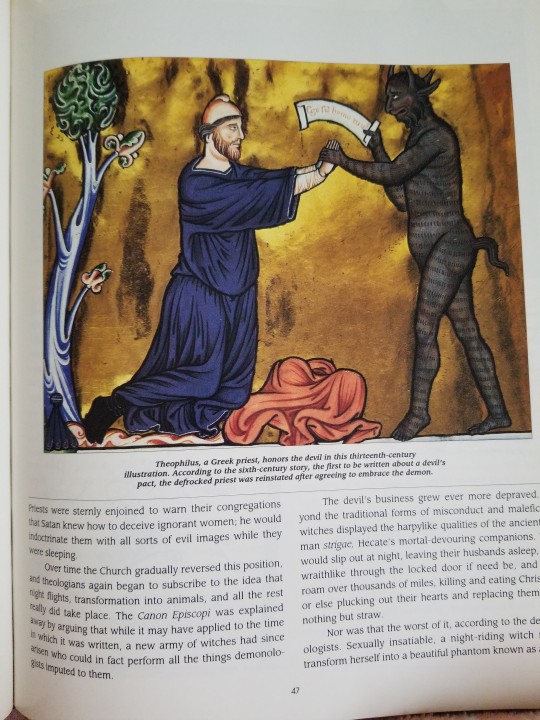

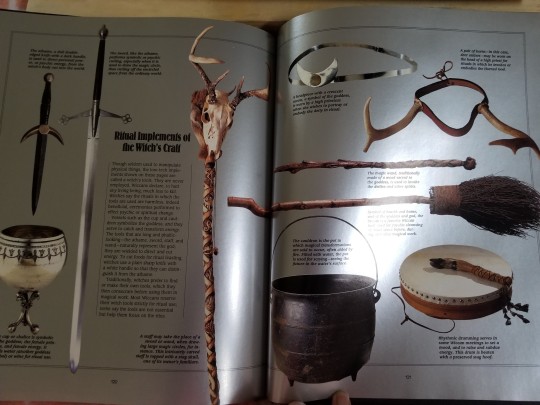
A book on the history of witchcraft up until "Modern day" of the 1990s. Even young I knew my calling
15 notes
·
View notes
Text
Articles I read in May 2022
I normally don't do this, but since I have been working full time on my thesis, I read a lot of articles, so I thought I do a wrap up of those aswell. The theme of the articles is witch hunts and the historiography of witchcraft, as my thesis is on a witch trial. All the articles I found on jstor (and I will link the website), the majority are in English but I'll also include those written in Italian.
The Pursuit of Reality: Recent Research into the History of Witchcraft by Malcolm Gaskill
The Historiography of European Witchcraft: Progress and Prospects by E. William Monter
The European Witch Craze of the 14th to 17th Centuries: A Sociologist's Perspective by Nachman Ben-Yehuda
Who Were the Witches? The Social Roles of the Accused in the European Witch Trials by Richard A. Horsley
Witchcraft, Female Aggression, and Power in the Early Modern Community by Edward Bever
Witchcraft Prosecutions and the Decline of Magic by Edward Bever
The Invisible Men: The Historial and The Male Witch by Lara Apps and Andrew Gow (This is the first chapter of the book Male Witches In Early Modern Europe, I ended up reading the whole book, all the chapters are present on jstor, but I will link only this one. For those interested the book is composed by five chapters plus the introduction and conclusion)
La stregoneria. Confessioni e accuse, nell'analisi di storici e
antropologi di Mary Douglas Reviewed by Michela Pereira
Ancora a Proposito di Streghe by Michaela Valente
The full list of books I read this month and their reviews is here
#i think this type of wrap up could be a good way at the end of the month for me to realize how much i have done#i am in such a weird place atm with my thesis i don't really feel like i am doing progress even though i research even just a bit everyday#articles i read#articles wrap up#2022 articles#booklr#bookblr#studyblr#studyinspo#historyblr#history#historiography#witch hunts#witch craze#witchcraft#history of witchcraft#reading#academic reading#academic articles#history articles#mine#the---hermit
73 notes
·
View notes
Text
Quick reminder that the so-called Lilith sigil has no base in any tradition and is even inconsistent with the myth. There is no mention of Lilith in Christian grimoires of demonology, but someone in the 21st century thought it was necessary to create a symbol imitating the style of the Goetia. I'm all for parahistorical fiction, as long as it is not confused with reality, but considering all the misleading websites that offer it as truth and all the tumblr witches that don't do critical research, a heads up is necessary.
The more problematic side of it, is that the symbol uses Latin letters, giving Lilith a Christian framing. Not only does it put her where she never was, but it erases her origin in Jewish Qabalah. Of course, the Zohar and other works only offer protection against Lilith and cannot anticipate the worship that she would receive only after 19th century Romanticism.
Certainly, it is the task of modern witches to create new symbols for new ages, but we must do so by understanding history, lest we fall in the traps of the ruling ideology.
For further reading:
Goetia
History of Lilith
Zohar
#hail lilith#demonology#history of witchcraft#witchblr#if someone has legitimate proof of the symbol's origin i would like to see it#if one more person claims it was revealed to them in their dreams or some shit i swear i will stab them
3 notes
·
View notes
Note
(Just a preface to this ask, I'm an Atheopagan, not a Christian, but I'm well versed in the bible due to my upbringing)
I mean absolutely no disrespect to you, so I'm very sorry if this comes across as condescending or accusatory as that is absolutely not my intention; but I do not understand how one can be both Christian and a witch at the same time. The bible expressly condemns witchcraft - For example, Exodus 22:18 and Leviticus 20:27 - and from a historical perspective, witches were heavily persecuted in biblical times (and basically all of history after that including today) in the name of Christ. I'm not saying you need to choose one or the other, but I don't see these belief systems as compatible with each other in any way. Could you possibly tell me your thoughts/feelings/beliefs on this?
Absolutely! Let's address these verses and some historical context. Since both verses are from the Old Testament, I'm going to use my interlinear Hebrew/English Bible. So, the verse in Leviticus you're talking about is this one:

In this verse, what's being forbidden is necromancy and the summoning of "familiar spirits". In context, the familiar spirits likely refers to A) tutelary/household spirits or B) pagan/foreign deities. Since Judaism is a monotheistic faith, and Leviticus is a book of Jewish law it makes sense that it wouldn't look kindly on summoning or venerating other spirits/deities. The first commandment is about not worshipping other gods:
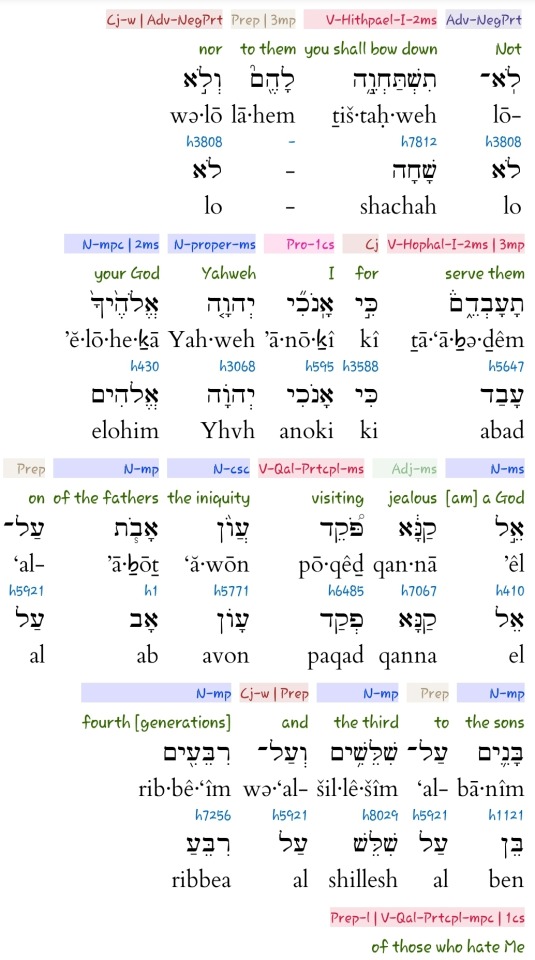
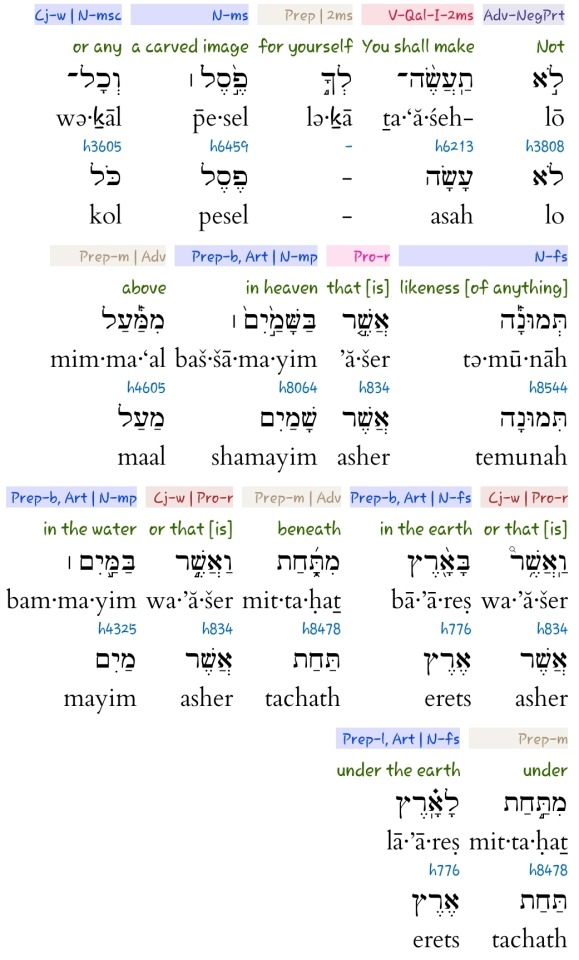

I don't summon any spirits or venerate any other deities in my practice, so I don't consider myself to be in violation of this law.
Now let's look at the verse in Exodus:

This one seems pretty straightforward. The question to ask here is what is meant by sorcery? This is part of a set of laws given to the Jewish people after Moses led them out of Egypt, meant to mark them as God's chosen people. The sorcery being referred to here is likely the magic done by Egyptians in worship of/with power from their deities. In Biblical times "sorcery" is heavily, almost intrinsically associated with worship of foreign gods. Also, it has been suggested that the Hebrew word for sorceress used here may mean something closer to "poisoner" rather than "witch". It was translated as "pharmakeia" in the Septuagint, which would refer to an apothecary or herbalist. Keep in mind that many ancient medicines were poisonous or harmful.
Our modern definition of magic/witchcraft is wider than the Biblical one. In fact, there are many instances where Biblical figures do what we would consider magic (particularly divination) as part of worship or in service of God, and this is not forbidden or looked negatively upon.
As for your second point about persecution: the history of persecution of magic-users/witches is long and complex. Witch-hunts happened in many different places at many different times and were motivated by different things over the centuries. Often, they were used to erase people's traditions or to punish those they perceived as a threat to social norms. Generally, it was fuelled by misogyny, xenophobia, and racism. In many cases it had more to do with those factors than the practice of magic itself.
Fear and intolerance from Christians has caused massive amounts of harm to countless people over the years. As a lesbian, I'm all too aware of that, having experienced it firsthand. That's why I do my best to advocate for marginalized people in my community, especially those groups that have been harmed by hegemonic Christianity in the past. I try to be aware of the privilege being a Christian in America gives me, and to use the power that that privilege gives me to uplift people who need it.
I hope this answers your questions!
-Ailith
#witchblr#christian witch#witchcraft#history of witchcraft#christian witchcraft#christian folk magic
22 notes
·
View notes
Text






JSTOR Articles on the History of Witchcraft, Witch Trials, and Folk Magic Beliefs
This is a partial of of articles on these subjects that can be found in the JSTOR archives. This is not exhaustive - this is just the portion I've saved for my own studies (I've read and referenced about a third of them so far) and I encourage readers and researchers to do their own digging. I recommend the articles by Ronald Hutton, Owen Davies, Mary Beth Norton, Malcolm Gaskill, Michael D. Bailey, and Willem de Blecourt as a place to start.
If you don't have personal access to JSTOR, you may be able to access the archive through your local library, university, museum, or historical society.
Full text list of titles below the cut:
'Hatcht up in Villanie and Witchcraft': Historical, Fiction, and Fantastical Recuperations of the Witch Child, by Chloe Buckley
'I Would Have Eaten You Too': Werewolf Legends in the Flemish, Dutch and German Area, by Willem de Blecourt
'The Divels Special Instruments': Women and Witchcraft before the Great Witch-hunt, by Karen Jones and Michael Zell
'The Root is Hidden and the Material Uncertain': The Challenges of Prosecuting Witchcraft in Early Modern Venice, by Jonathan Seitz
'Your Wife Will Be Your Biggest Accuser': Reinforcing Codes of Manhood at New England Witch Trials, by Richard Godbeer
A Family Matter: The CAse of a Witch Family in an 18th-Century Volhynian Town, by Kateryna Dysa
A Note on the Survival of Popular Christian Magic, by Peter Rushton
A Note on the Witch-Familiar in Seventeenth Century England, by F.H. Amphlett Micklewright
African Ideas of Witchcraft, by E.G. Parrinder
Aprodisiacs, Charms, and Philtres, by Eleanor Long
Charmers and Charming in England and Wales from the Eighteenth to the Twentieth Century, by Owen Davies
Charming Witches: The 'Old Religion' and the Pendle Trial, by Diane Purkiss
Demonology and Medicine in the Sixteenth and Seventeenth Centuries, by Sona Rosa Burstein
Denver Tries A Witch, by Margaret M. Oyler
Devil's Stones and Midnight Rites: Megaliths, Folklore, and Contemporary Pagan Witchcraft, by Ethan Doyle White
Edmund Jones and the Pwcca'r Trwyn, by Adam N. Coward
Essex County Witchcraft, by Mary Beth Norton
From Sorcery to Witchcraft: Clerical Conceptions of Magic in the Later Middle Ages, by Michael D. Bailey
German Witchcraft, by C. Grant Loomis
Getting of Elves: Healing, Witchcraft and Fairies in the Scottish Witchcraft Trials, by Alaric Hall
Ghost and Witch in the Sixteenth and Seventeenth Centuries, by Gillian Bennett
Ghosts in Mirrors: Reflections of the Self, by Elizabeth Tucker
Healing Charms in Use in England and Wales 1700-1950, by Owen Davies
How Pagan Were Medieval English Peasants?, by Ronald Hutton
Invisible Men: The Historian and the Male Witch, by Lara Apps and Andrew Gow
Johannes Junius: Bamberg's Famous Male Witch, by Lara Apps and Andrew Gow
Knots and Knot Lore, by Cyrus L. Day
Learned Credulity in Gianfrancesco Pico's Strix, by Walter Stephens
Literally Unthinkable: Demonological Descriptions of Male Witches, by Lara Apps and Andrew Gow
Magical Beliefs and Practices in Old Bulgaria, by Louis Petroff
Maleficent Witchcraft in Britian since 1900, by Thomas Waters
Masculinity and Male Witches in Old and New England, 1593-1680, by E.J. Kent
Methodism, the Clergy, and the Popular Belief in Witchcraft and Magic, by Owen Davies
Modern Pagan Festivals: A Study in the Nature of Tradition, by Ronald Hutton
Monstrous Theories: Werewolves and the Abuse of History, by Willem de Blecourt
Neapolitan Witchcraft, by J.B. Andrews and James G. Frazer
New England's Other Witch-Hunt: The Hartford Witch-Hunt of the 1660s and Changing Patterns in Witchcraft Prosecution, by Walter Woodward
Newspapers and the Popular Belief in Witchcraft and Magic in the Modern Period, by Owen Davies
Occult Influence, Free Will, and Medical Authority in the Old Bailey, circa 1860-1910, by Karl Bell
Paganism and Polemic: The Debate over the Origins of Modern Pagan Witchcraft, by Ronald Hutton
Plants, Livestock Losses and Witchcraft Accusations in Tudor and Stuart England, by Sally Hickey
Polychronican: Witchcraft History and Children, interpreting England's Biggest Witch Trial, 1612, by Robert Poole
Publishing for the Masses: Early Modern English Witchcraft Pamphlets, by Carla Suhr
Rethinking with Demons: The Campaign against Superstition in Late Medieval and Early Modern Europe from a Cognitive Perspective, by Andrew Keitt
Seasonal Festivity in Late Medieval England, Some Further Reflections, by Ronald Hutton
Secondary Targets: Male Witches on Trial, by Lara Apps and Andrew Gow
Some Notes on Modern Somerset Witch-Lore, by R.L. Tongue
Some Notes on the History and Practice of Witchcraft in the Eastern Counties, by L.F. Newman
Some Seventeenth-Century Books of Magic, by K.M. Briggs
Stones and Spirits, by Jane P. Davidson and Christopher John Duffin
Superstitions, Magic, and Witchcraft, by Jeffrey R. Watt
The 1850s Prosecution of Gerasim Fedotov for Witchcraft, by Christine D. Worobec
The Catholic Salem: How the Devil Destroyed a Saint's Parish (Mattaincourt, 1627-31), by William Monter
The Celtic Tarot and the Secret Tradition: A Study in Modern Legend Making, by Juliette Wood
The Cult of Seely Wights in Scotland, by Julian Goodare
The Decline of Magic: Challenge and Response in Early Enlightenment England, by Michael Hunter
The Devil-Worshippers at the Prom: Rumor-Panic as Therapeutic Magic, by Bill Ellis
The Devil's Pact: Diabolic Writing and Oral Tradition, by Kimberly Ball
The Discovery of Witches: Matthew Hopkins' Defense of his Witch-hunting Methods, by Sheilagh Ilona O'Brien
The Disenchantment of Magic: Spells, Charms, and Superstition in Early European Witchcraft Literature, by Michael D. Bailey
The Epistemology of Sexual Trauma in Witches' Sabbaths, Satanic Ritual Abuse, and Alien Abduction Narratives, by Joseph Laycock
The European Witchcraft Debate and the Dutch Variant, by Marijke Gijswijt-Hofstra
The Flying Phallus and the Laughing Inquisitor: Penis Theft in the Malleus Maleficarum, by Moira Smith
The Framework for Scottish Witch-Hunting for the 1590s, by Julian Goodare
The Imposture of Witchcraft, by Rossell Hope Robbins
The Last Witch of England, by J.B. Kingsbury
The Late Lancashire Witches: The Girls Next Door, by Meg Pearson
The Malefic Unconscious: Gender, Genre, and History in Early Antebellum Witchcraft Narratives, by Lisa M. Vetere
The Mingling of Fairy and Witch Beliefs in Sixteenth and Seventeenth Century Scotland, by J.A. MacCulloch
The Nightmare Experience, Sleep Paralysis, and Witchcraft Accusations, by Owen Davies
The Pursuit of Reality: Recent Research into the History of Witchcraft, by Malcolm Gaskill
The Reception of Reginald Scot's Discovery of Witchcraft: Witchcraft, Magic, and Radical Religions, by S.F. Davies
The Role of Gender in Accusations of Witchcraft: The Case of Eastern Slovenia, by Mirjam Mencej
The Scottish Witchcraft Act, by Julian Goodare
The Werewolves of Livonia: Lycanthropy and Shape-Changing in Scholarly Texts, 1550-1720, by Stefan Donecker
The Wild Hunter and the Witches' Sabbath, by Ronald Hutton
The Winter Goddess: Percht, Holda, and Related Figures, by Lotta Motz
The Witch's Familiar and the Fairy in Early Modern England and Scotland, by Emma Wilby
The Witches of Canewdon, by Eric Maple
The Witches of Dengie, by Eric Maple
The Witches' Flying and the Spanish Inquisitors, or How to Explain Away the Impossible, by Gustav Henningsen
To Accommodate the Earthly Kingdom to Divine Will: Official and Nonconformist Definitions of Witchcraft in England, by Agustin Mendez
Unwitching: The Social and Magical Practice in Traditional European Communities, by Mirjam Mencej
Urbanization and the Decline of Witchcraft: An Examination of London, by Owen Davies
Weather, Prayer, and Magical Jugs, by Ralph Merrifield
Witchcraft and Evidence in Early Modern England, by Malcolm Gaskill
Witchcraft and Magic in the Elizabethan Drama by H.W. Herrington
Witchcraft and Magic in the Rochford Hundred, by Eric Maple
Witchcraft and Old Women in Early Modern Germany, by Alison Rowlands
Witchcraft and Sexual Knowledge in Early Modern England, by Julia M. Garrett
Witchcraft and Silence in Guillaume Cazaux's 'The Mass of Saint Secaire', by William G. Pooley
Witchcraft and the Early Modern Imagination, by Robin Briggs
Witchcraft and the Western Imagination by Lyndal Roper
Witchcraft Belief and Trals in Early Modern Ireland, by Andrew Sneddon
Witchcraft Deaths, by Mimi Clar
Witchcraft Fears and Psychosocial Factors in Disease, by Edward Bever
Witchcraft for Sale, by T.M. Pearce
Witchcraft in Denmark, by Gustav Henningsen
Witchcraft in Germany, by Taras Lukach
Witchcraft in Kilkenny, by T. Crofton Croker
Witchcraft in Anglo-American Colonies, by Mary Beth Norton
Witchcraft in the Central Balkans I: Characteristics of Witches, by T.P. Vukanovic
Witchcraft in the Central Balkans II: Protection Against Witches, by T.P. Vukanovic
Witchcraft Justice and Human Rights in Africa, Cases from Malawi, by Adam Ashforth
Witchcraft Magic and Spirits on the Border of Pennsylvania and West Virginia, by S.P. Bayard
Witchcraft Persecutions in the Post-Craze Era: The Case of Ann Izzard of Great Paxton, 1808, by Stephen A. Mitchell
Witchcraft Prosecutions and the Decline of Magic, by Edward Bever
Witchcraft, by Ray B. Browne
Witchcraft, Poison, Law, and Atlantic Slavery, by Diana Paton
Witchcraft, Politics, and Memory in Seventeeth-Century England, by Malcolm Gaskill
Witchcraft, Spirit Possession and Heresy, by Lucy Mair
Witchcraft, Women's Honour and Customary Law in Early Modern Wales, by Sally Parkin
Witches and Witchbusters, by Jacqueline Simpson
Witches, Cunning Folk, and Competition in Denmark, by Timothy R. Tangherlini
Witches' Herbs on Trial, by Michael Ostling
#witchcraft#witchblr#history#history of witchcraft#occult#witch trials#research#recommended reading#book recs#jstor
2K notes
·
View notes
Text
Ioan Pop-Curşeu and Ștefana Pop-Curșeu. Witchcraft in Romania, Palgrave Historical Studies in Witchcraft and Magic. New York: Palgrave Macmillan, 2023. Hardcover. 331 pages.
Shop link in bio.
instagram
6 notes
·
View notes
Text

Stardust Sessions with Lozzie Stardust - Deuteronomy and Daemonologie (BONUS)
Now available on your favorite podcatcher!
Just one more hiatus episode to go! This month, we’re wrapping up our dive into the life and deeds of King James VI/I with a discussion of his literary exploits, from commissioning an approved English translation of the Bible to pamphlets on how to hunt witches and rule a country effectively.
Learn how one man’s personal demons and some really poor text formatting decisions changed the course of literary and religious history, and why it’s never a good idea to base your entire understanding of the world around one single book.
Check my Wordpress for podcast show notes and information on upcoming events.
Follow the show on Twitter @hex_podcast for the latest updates! You can also find me as @BreeNicGarran on Twitter, TikTok, Instagram, and Wordpress. Follow Lozzie Stardust on TikTok, Instagram, and Twitter @bihexual and come chat with us in the Nerd & Tie Discord!
Visit the Willow Wings Witch Shop to purchase my books and homemade accoutrements for your craft!
Proud member of the Nerd and Tie Podcast Network.
MUSIC CREDITS
“Netherworld Shanty” & “Miri’s Magic Dance”
Kevin MacLeod (incompetech.com)
Licensed under Creative Commons: By Attribution 3.0
http://creativecommons.org/licenses/by/3.0/
#Hex Positive#history#witchcraft#history of witchcraft#literature#english history#podcasts#podcast recs
38 notes
·
View notes
Text
Literally every Abrahamic faith ever: “Noooooo! Magic bad! Don’t use it!”
Some mage: “Okay but…..what if we had…Abrahamic magic?
#witchcraft#occult#history of witchcraft#abrahamic religions#judaism#islam#christianity#bahai#religion#abrahamic magic
3 notes
·
View notes
Text
⛤HISTORY OF SAMHAIN/HALLOWEEN⛤
This custom has its origins in the pagan Celtic peoples of Ireland, Britain and northern France.
Since they believed that life is born from death, they used the end of autumn to mark the beginning of their new year, the period when nature dies, because its death, according to their belief, represents the time of darkness, decay and death.
On that day, the fire on the home hearths was extinguished and darkness reigned everywhere.
On the last evening of the autumn harvest, nature changes, and the sunny and warm summer gives way to the dark and cold winter, and the fertile land becomes barren.
The Celts believed that night to be magical and apparently attached great importance to it.
In modern times, Samhain is usually celebrated from October 31 to November 1 to welcome in the harvest and usher in "the dark half of the year".
Celebrants believe that the barriers between the physical world and the spirit world are broken during Samhain, allowing for greater interaction between humans and the inhabitants of the Other World.
As this holiday was really popular, many religions, as Christianity, turned away from its true meaning.
⛤ANCIENT SAMHAIN⛤
The ancient Celts marked Samhain as the most significant of the four quarterly fire festivals, which take place at the midpoint between the autumn equinox and the winter solstice.
During this time of year, hearth fires in family homes were allowed to burn during harvest.
At the end of the gathering work, the celebrants joined the druid priests to light a community fire using a wheel that would cause friction and sparks.
The wheel was considered a representation of the sun and used in conjunction with prayers. Cattle were sacrificed and participants brought a flame from the communal bonfire to their home to rekindle the hearth.
Early texts present Samhain as an obligatory three-day and three-night celebration in which the community was to perform to local kings or chieftains.
Failure to attend is believed to result in punishment from the gods, usually illness or death.
There was also a military aspect to Samhain in Ireland, with festive thrones prepared for soldier commanders.
Anyone who committed a crime or used their weapons during the celebration faced a death sentence.
Some documents mention six days of drinking excess alcohol, typically mead or beer, along with gluttonous feasts.
⛤SAMHAIN IN THE MIDDLE AGES⛤
As the Middle Ages progressed, so did the celebrations of the fire festivals.
Bonfires known as Samghnagans, which were Samhain's more personal fires near the farms, became a tradition, presumably to protect families from fairies and witches.
Carved turnips called jack-o-lanterns began to appear, attached by strings to sticks and set with charcoal. Later the Irish tradition passed to pumpkins.
In Wales, men threw firewood at each other in violent games and lit fireworks.
⛤WICCA AND SAMHAIN⛤
A broad revival of Samhain resembling its traditional pagan form began in the 1980s with the growing popularity of Wicca.
The Samhain Wicca celebration takes many forms, from traditional fire ceremonies to celebrations that embrace many aspects of modern Halloween, as well as activities related to honoring nature or ancestors.
Wiccans view Samhain as the passing of the year and incorporate common Wiccan traditions into the celebration.
In the Druid tradition, Samhain celebrates the dead with a festival on October 31 and usually features a bonfire and communion with the dead.
American pagans often hold music and dance celebrations called Witches' Balls near Samhain.
Pagans who embrace Celtic traditions with the intent of faithfully reintroducing them into modern paganism are called Celtic reconstructors.
In this tradition, Samhain is called Oiche Shamhna and celebrates the mating between the gods Tuatha de Danann Dagda and the river Unis.
Celtic reconstructors celebrate by placing juniper decorations around their homes and creating an altar for the dead where a feast is held in honor of the deceased.
Samhain is the dark Moon - the time of death, letting go, completion, binding of free ends, retreat and regeneration.
Samhain is a time when the veil between worlds is thin which makes the next 12 days super powerful when it comes to intuition, psychic impressions, dreams, prophecy, mysticism and spirituality.
It's a great time to relax by a fire or light a few candles and listen to your inner self.It's also a great time to use astrology, tarot cards, runes, dreams and more to mirror the truth.
The depths are calling us.
We are asked to truly feel our emotions, dance with our shadows, face our fears and obsessions, and face the places in our life where we manipulate or control or allow others to manipulate and control us.
⛤HALLOWEEN IN ORTHODOXY⛤
When these people accepted Christianity, the holiday of All Saints was established, which was celebrated on November 1 precisely to eradicate this occult custom.
On the night before this holiday, an all-night vigil was held.
However, under the pressure of globalization and Western influence, as well as the influence of different religions and cults, the night before the Christian holiday became the night of witches, witchcraft, summoning evil spirits and demons.
The word "Halloween" comes from the expression "All-Hallows-Evening", which means "the evening before the church holiday of All Saints".
In Orthodoxy, Saint Luke, the creator of one of the Gospels, is celebrated on October 31.
It is believed that this doctor and patron of artists painted the first icons of Jesus Christ, the Virgin Mary and the apostles Peter and Paul.
The tradition of celebrating Halloween was brought to North America by Irish immigrants in the 19th century.
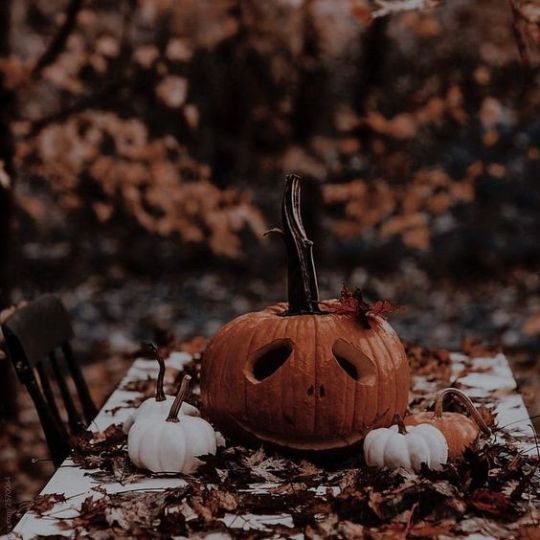
Witchfully Yours,
⛤Isidora⛤
#samhain#all hallows eve#magick#kitchen witch#witchcraft#witch aesthetic#witchblr#witches#witchy things#history of witchcraft#witchyvibes#witchcore#wicca#wiccablr#green wicca#celtic wicca#kitchen wicca#wiccan#pagan#paganism#spirituality#spiritualawakening#meditation#spiritualgrowth#spiritual#spiritual journey#magic#grimoire#notes#studies
186 notes
·
View notes